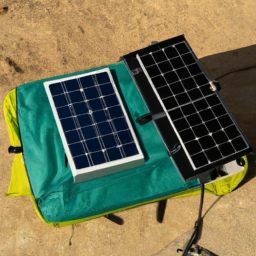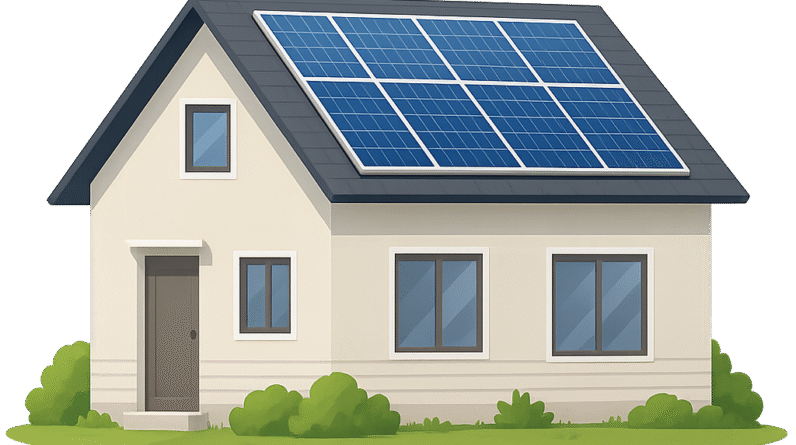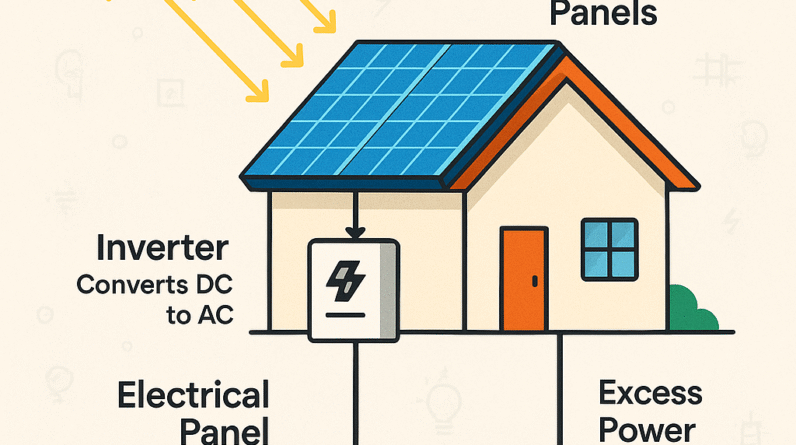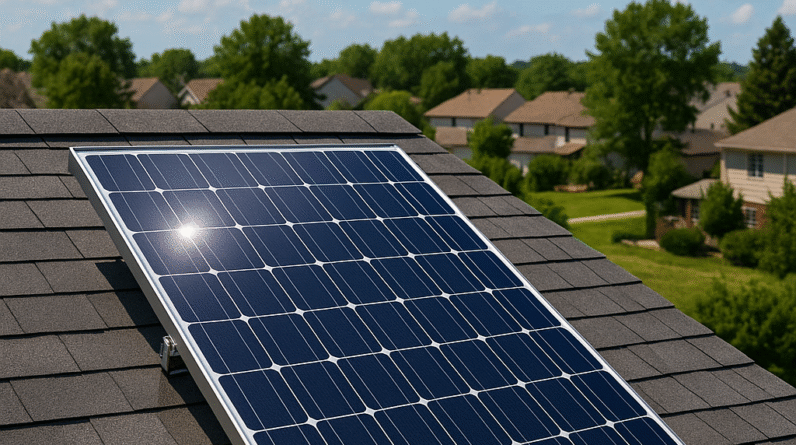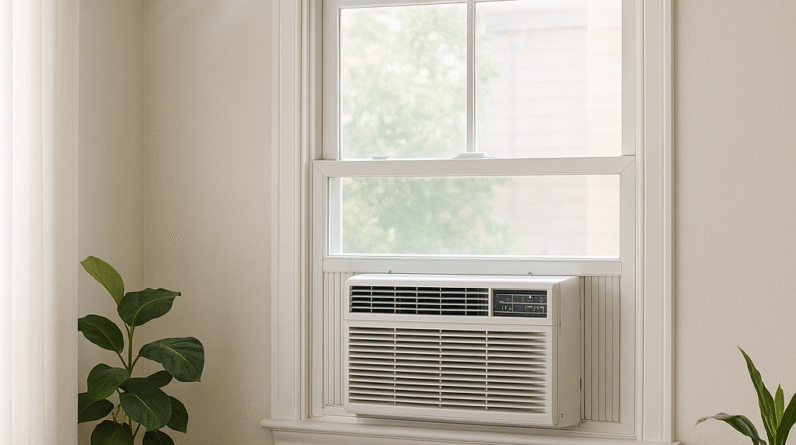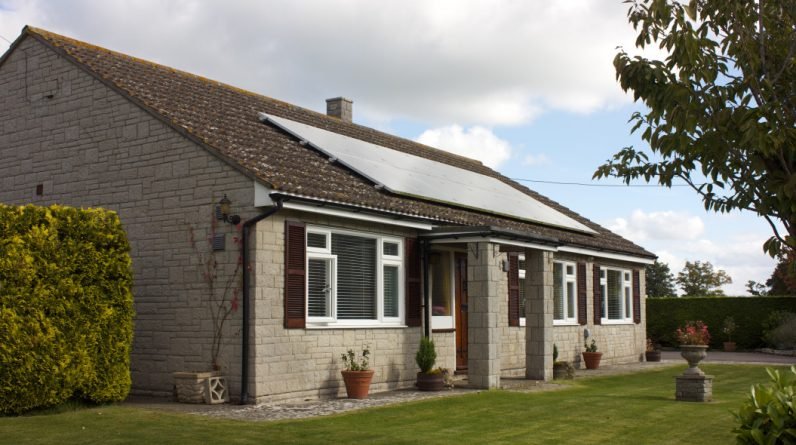
At What Temperature Do Solar Panels Stop Working?
At What Temperature Do Solar Panels Stop Working? Imagine a world where solar panels magically cease to function under a scorching heat. But let’s debunk this myth right now – solar panels persevere, even in the face of extreme temperatures. While it’s true that heat can impact their efficiency, these remarkable devices have a surprising ability to adapt and continue generating power, even in the hottest of climates. So, prepare to be amazed as we unravel the truth about the temperature threshold that solar panels can endure.
Factors Affecting Solar Panel Performance
The Role of Temperature
One of the key factors that can significantly impact the performance of solar panels is temperature. Solar panels convert sunlight into electricity, but high temperatures can affect this process. Understanding the effects of temperature on solar panel efficiency is crucial for optimizing their performance and maximizing energy generation.
Maximum Temperature Tolerance
Solar panels, like any other electrical devices, have a maximum temperature tolerance. When the temperature of solar panels exceeds this threshold, their performance can be compromised. It is important to consider this factor when designing and installing solar panels to ensure they operate within their optimal temperature range.
Temperature Coefficient
The temperature coefficient is a measure of how much the performance of a solar panel is affected by temperature variations. It indicates the percentage change in the electrical output of the panel for every degree Celsius rise in temperature. Positive and negative temperature coefficients exist, and they impact the overall performance of the solar panel.
Temperature Impact on Solar Panel Efficiency
Understanding Solar Cell Efficiency
Solar cell efficiency refers to how effectively solar panels convert sunlight into electricity. It is a crucial factor in determining the overall performance and energy generation capacity of solar panels. Temperature plays a significant role in affecting solar cell efficiency, and understanding this relationship is essential for optimizing energy production.
Heat-Generated Voltage Loss
When solar panels are subjected to high temperatures, they experience heat-generated voltage loss. This phenomenon causes a decrease in the voltage output of the solar panel, resulting in reduced energy generation. Minimizing the impact of heat-generated voltage loss is important for maintaining optimal performance and maximizing energy production.
Temperature-Related Current Loss
The electrical current generated by solar panels can also be affected by temperature. High temperatures can lead to an increase in the internal resistance of the solar cells, resulting in temperature-related current loss. This loss of current reduces the overall energy generation capacity of the solar panel.
Combined Effect on Efficiency
The heat-generated voltage loss and temperature-related current loss discussed above collectively impact the overall efficiency of solar panels. The decrease in voltage output and the reduction in current generation due to high temperatures result in a decrease in the overall energy generation efficiency. Minimizing these temperature-related losses is crucial for maintaining high solar panel efficiency.

Standard Testing Conditions (STC)
Testing Environment
Standard Testing Conditions (STC) are specific conditions under which solar panels are tested to determine their performance and efficiency. The STC parameters include a cell temperature of 25 degrees Celsius, an irradiance level of 1000 watts per square meter, and an air mass spectrum of 1.5. These testing conditions provide a standardized benchmark for comparing the performance of solar panels.
Effect of STC on Solar Panel Performance
It is important to note that solar panels rarely operate under the exact conditions specified by the STC. Variations in temperature, irradiance, and other factors can impact the actual performance of solar panels in real-world environments. Understanding the impact of these variations is essential for accurately estimating the energy generation capacity of solar panels.
Definition and Calculation
The temperature coefficient is a measure of how a solar panel’s electrical output varies with changes in temperature. It is expressed as a percentage change in the electrical output per degree Celsius rise in temperature. The temperature coefficient can be calculated by measuring the change in voltage or current with respect to temperature variations.
Positive and Negative Temperature Coefficients
Solar panels can have either a positive or a negative temperature coefficient. A positive temperature coefficient means that the electrical output of the solar panel increases with rising temperature, while a negative temperature coefficient indicates a decrease in electrical output with increasing temperature. The temperature coefficient is an important factor to consider when selecting solar panels for specific environmental conditions.
Impact on Solar Panel Performance
The temperature coefficient directly affects the performance of solar panels. Panels with a positive temperature coefficient may experience a decrease in efficiency as temperatures rise, while those with a negative temperature coefficient may exhibit an increase in efficiency in higher temperature environments. Understanding the temperature coefficient is crucial for optimizing the performance of solar panels in different climatic conditions.
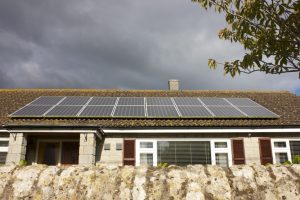
Thermal Management in Solar Panels
Types of Heat Transfer
Heat transfer plays a significant role in the thermal management of solar panels. There are three main types of heat transfer: conduction, convection, and radiation. Conduction involves the transfer of heat through direct contact, while convection is the transfer of heat through fluid movement. Radiation is the transfer of heat through electromagnetic waves. Understanding these mechanisms is essential for implementing effective thermal management strategies in solar panels.
Impact of Heat on Solar Panels
Excessive heat can have detrimental effects on solar panels. High temperatures can cause accelerated degradation of the materials used in solar panels, leading to a decrease in their lifespan and overall performance. Additionally, heat-related losses in voltage and current can reduce energy generation efficiency. Efficient thermal management is crucial for mitigating these negative impacts and maintaining the longevity and performance of solar panels.
Thermal Management Solutions
Implementing effective thermal management solutions is essential to maintain optimal temperatures in solar panels. Various techniques can be employed, such as passive cooling methods, active cooling systems, and advanced materials with enhanced thermal properties. These solutions aim to dissipate heat effectively and maintain the solar panels within their optimal temperature range, ensuring optimal performance and longevity.
Temperature Limits for Solar Panels
Stress Testing
Before determining the temperature limits for solar panels, manufacturers often subject them to stress testing. This involves exposing the panels to extreme temperatures to assess their performance and durability in challenging environmental conditions. Stress testing helps manufacturers establish the upper and lower temperature thresholds at which solar panels can operate reliably.
Critical Temperature Threshold
Solar panels have a critical temperature threshold beyond which their performance can be severely affected. This threshold can vary depending on the specific materials, construction, and design of the solar panel. It is essential to operate solar panels within their temperature limits to ensure optimal performance, prevent damage, and prolong their lifespan.
Manufacturers provide specifications and guidelines for the operating temperature range of their solar panels. These specifications define the ideal temperature range within which the panels can perform efficiently and effectively. Adhering to these manufacturer specifications is crucial for ensuring optimal solar panel performance and preventing potential issues caused by operating outside the recommended temperature range.

Operational Range and Performance Guarantee
Temperature Range for Optimal Performance
Solar panels have an optimal temperature range within which they can operate at peak efficiency. This range typically falls between 25 to 35 degrees Celsius. Operating solar panels within this temperature range ensures maximum energy generation and optimal performance. It is important to monitor and maintain the temperature of solar panels to ensure they remain within this operational range.
Performance Reduction in Extreme Temperatures
Extreme temperatures, both hot and cold, can result in a decrease in the performance of solar panels. High temperatures increase heat-related losses, while extreme cold temperatures can cause a decrease in electrical conductivity and efficiency. It is important to consider the performance reduction in these extreme temperature conditions when planning for solar panel installations.
Performance Guarantee and Warranty
Solar panel manufacturers often provide performance guarantees and warranties that specify the expected performance levels and durability of their products. These guarantees and warranties typically outline the conditions under which the performance is guaranteed. Understanding the terms and conditions of these guarantees is crucial for ensuring that the solar panels deliver the expected performance and longevity.
Mitigating the Effects of High Temperatures
Proper Installation Guideline
Proper installation of solar panels is essential for minimizing the effects of high temperatures. Installing solar panels in locations that receive sufficient airflow and ventilation can help dissipate excess heat, preventing heat-related losses in voltage and current. Follow the manufacturer’s guidelines for proper installation, including considerations for shading and cooling measures.
Ventilation and Airflow
Ensuring adequate ventilation and airflow around solar panels can help dissipate excess heat and prevent temperature buildup. Proper spacing between panels, mounting angles, and using raised or tilted mounting systems can improve airflow and increase cooling efficiency. It is important to consider these factors during the installation process to optimize the performance of solar panels in high-temperature environments.
Shade and Cooling Measures
Implementing shade and cooling measures can further mitigate the effects of high temperatures on solar panels. These measures can include the use of shading structures, such as awnings or pergolas, to minimize direct exposure to sunlight and reduce heat buildup. Additionally, active cooling systems, such as the use of water sprays or heat exchange systems, can assist in maintaining lower temperatures and optimizing solar panel performance.
Extreme Temperature Adaptation
Solar Panel Design Innovation
Solar panel manufacturers are continually innovating and developing new designs to adapt to extreme temperature conditions. These designs often incorporate advanced materials with enhanced thermal properties and improved heat dissipation capabilities. By optimizing the design of solar panels, manufacturers aim to minimize the effects of high temperatures and improve overall performance and durability.
Developing Technology for High-Temperature Environments
Research and development efforts are underway to develop solar panel technologies specifically designed for high-temperature environments. These technologies aim to enhance the efficiency and performance of solar panels under extreme temperature conditions. Advances in materials, cooling systems, and thermal management techniques are being explored to address the challenges posed by high-temperature environments.
The field of solar energy research continues to explore new possibilities and advancements for solar panel performance in extreme temperature conditions. Ongoing research focuses on improving thermal management strategies, exploring novel materials, and developing innovative designs to enhance the efficiency and durability of solar panels. These efforts offer promising prospects for future solar panel technologies and their adaptation to varying environmental conditions.
Conclusion
Temperature significantly affects the performance of solar panels, and understanding its impact is vital for optimizing their efficiency and energy generation capacity. Factors such as maximum temperature tolerance, temperature coefficient, and thermal management techniques play crucial roles in maintaining optimal performance and longevity of solar panels. By considering these factors and implementing proper installation guidelines and cooling measures, the effects of high temperatures can be mitigated, ensuring optimal solar panel performance and maximizing energy generation. Research and innovation in the field continue to drive advancements, offering promising prospects for future solar panel technologies capable of adapting to extreme temperature conditions.


